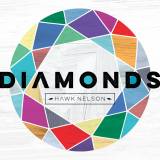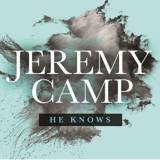

Perhaps because of this, the heaviest salvo of nostalgia World of Warcraft has hit me with came elsewhere in Legion's pre-launch content. Thus, the cataclysmic Alliance locales I’m seeing for the very first time are likely to be the only versions of those areas I ever see. Largely, that’s because now I’m playing as an Alliance Dranei, rather than a Horde Tauren.
WOW HITS 2016 LIST FULL
Honestly, it was hard for me to see much change in the Cataclysm expansion that came out a full three years after I left the game. Most of the layers in World of Warcraft’s concentric tree rings of content showed obvious progress, but there was one major exception. These "new" opening areas feel violently propulsive in a way the older parts of the game simply weren’t. The story was much the same: lots of bombastic, varied activities, interspersed with voice acting that’s now comprised of more than the two to three syllables I enjoyed years ago.

These were included with Cataclysm, the expansion preceding Pandaria, but they were still new to me. copyrightable werewolves) starting areas as well. Just for funsies, I also scoped out the goblin and "Worgen" (a.k.a. Now, the Dranei starting area seemed as slow as someone speared with a mage's Ice Lance. Bigknuck's starting zone, and a lot of the surrounding content, did not fare well with nearly a decades-worth of distance. Playing another character, a monk named Bigknucks (I tell myself his parents knew that one day he'd be way into punching things), I got to revisit the Dranei starting area I had romped in during The Burning Crusade. I soon helped blow a hole in its side and watched rivers of blood pour into the ocean.

And what does come next is usually a lot more interesting-if only visually-than anything I remember from 2007.Īs I conversed with a giant turtle carrying the landmass on its back, a la Discworld, I suddenly found two very different fantasy worlds from my teenage years becoming welded together. The starting area of WoW’s panda-centric third expansion, which I missed when it came out in 2012, has just enough slow moments to build anticipation for what comes next. Pandaria, by contrast, runs like an Italian train station. In the early stages of the game, especially, completing the simplest of fetch quests is an effort of endurance. The downside to this sense of scale was that it took forever to get from point A to B. I imagine it was the same for a lot of players back then, faced with an almost seamless planet's worth of land, sea, and air to explore. A to B to C, and back to A againīack when I was 17, I recall being mesmerized by the sheer scale of Azeroth, the world on which the war is crafted. What changed? What stayed the same? What did “Hearthstone” mean before it was a collectible card game? This is my tale of Rip van Winkle culture shock experienced in revisiting a virtual place I haven’t lived for years. So, as I set out to review the nostalgia-tinted Legion (how does one review something on this scale?), I felt I should see what two-presidential-terms’-worth of updates and expansions had already done to the game I knew and loved. It's been nine years since I last played World of Warcraft, back in my halcyon high school days of 2007 when I had plenty of time to sink into the game's first expansion, The Burning Crusade. That seems perfectly targeted at players like me. Familiar faces and locations return from throughout the game's tenure as the premier MMO on the block. The newest expansion, Legion, is definitely an attempt to feed on that nostalgia. We're talking 11 years of clicking tiny icons on bars, watching spells cool down, and saving up enough gold to buy a shiny new mount that's totally better than your other, functionally identical mount. It’s still a little hard to believe that World of Warcraft has been around long enough for people to be nostalgic about “the good old days.” At this point, WoW has been around for longer than what's sure to be a sizable chunk of its player base has been alive.


 0 kommentar(er)
0 kommentar(er)
